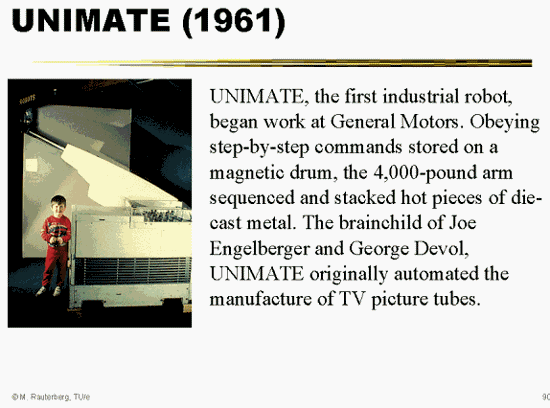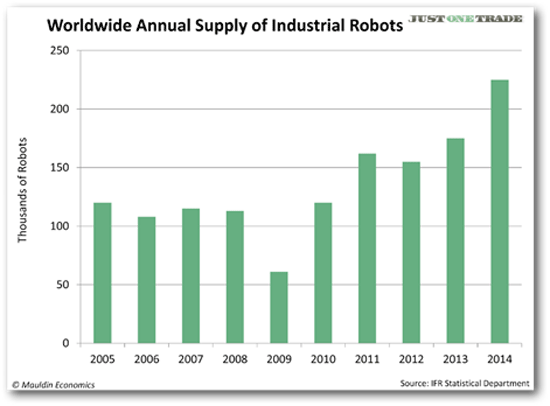I was raised on a small vegetable farm near Tacoma, Washington. My father hired lots of high school kids to work the fields in the summer.
In February of 1968, when the minimum wage was increased from $1.40 an hour to $1.60 an hour, I overheard some of my father’s employees excitedly talking about the 20-cent raise they were about to receive.

11 years old at the time, I was delighted because $1.60 seemed like a fortune to a little boy who only made 25 cents an hour on the family farm.
When I asked my mild-mannered farmer-father about the raise I assumed I would get, he grumbled, “I feed you, I buy you clothes, and you live in my house. You are lucky that I pay you ANYTHING!”
I don’t live in western Washington anymore, but I still have family and friends there, and the minimum wage is still an important topic in the area.
One of my friends, who owns a successful restaurant near the Seattle-Tacoma airport, has been moaning to me about the impact of the new $15 minimum wage on his profits. In response, he has been forced to cut hours as well as lay off some of his staff to survive.
Regardless of what side of the minimum-wage debate you are on, one of the clear effects of higher wages is an increase in the use of automation as a labor replacement.
Example: a new restaurant opened in San Francisco last week, which is nothing new, but this restaurant is unique in that you won’t see a single human being. Everything is computerized and robotic, except for the behind-the-scenes cooks who prepare the food.

Meal ordering and payment is done over in-store iPads or smartphones; no human interaction whatsoever. After your meal is prepared, it appears in glass compartments for pickup—just like in the 1960s cartoon show, The Jetsons.

Eatsa is far from the first business to use automation to replace humans. Consider ATM machines. How frequently do you get out of your car and go inside the bank to see a bank teller? Not often!
Even countries with low wages, like China, are automating at a rapid pace. The New York Times recently wrote this about automation and industrial robots:
Faced with an acute and worsening shortage of blue-collar workers, China is rushing to develop and deploy a wide variety of robots for use in thousands of factories.
Waves of migrant workers from the countryside filled China’s factories for the last three decades and helped make the nation the world’s largest manufacturer. But many companies now find themselves struggling to hire enough workers. And for the scarce workers they do find, pay has more than quintupled in the last decade, to more than $500 a month in coastal provinces.
Chinese businesses and the government are responding by designing and starting to install large numbers of robots, with the goal of keeping factories running and expanding without necessarily causing a drop in overall employment.
Like in Seattle, Chinese wages have been rising. The Nikkei Business Daily in Japan predicted that demands by Chinese workers for higher wages marked a “sea change” in China’s low-cost production model and “the situation poses a major strategic challenge to all manufacturers that have set up production in the country to capitalize on its low labor costs.”
Kyodo News quoted an unnamed Japanese auto executive who was stunned at the rapid rise in factory wages in China: “The pace of wage hikes is so fast that we will have no choice but to accelerate factory automation and curb the rise in labor costs by installing robots that will perform tasks currently done by workers.”
The Rise of Robots
Today’s factories are highly automated and use amazing robotic machines to do the work of thousands of men. These factory machines don’t look like the robots in the movies. They are a very specialized breed called CNCs, which stands for Computer Numerical Control machines. These sophisticated machine tools are operated by computer programs.
But these aren’t new toys, by any means. CNCs have been around since the early 1970s when computer-controlled systems were introduced.
The first modern-day industrial robot, the Unimate, was put into use by General Motors in 1961. The Unimate was a 4,000-pound robotic arm that attached to a giant steel drum and did things like pour liquid metal into die casts, weld auto bodies, and lift 500-pound car bodies.

The Unimate performed tasks that humans often found dangerous or boring, and did them with speed and exacting detail. The robot never called in sick, asked for a raise, or went on strike. Plus, it worked 24 hours a day. As you can imagine, robots are a productivity and profit lifesaver for factories.
Industrial robots are now a central part of the manufacturing industry. According to the International Federation of Robotics, robotic sales will increase by 12% a year from 2015 to 2017. The Boston Consulting Group estimates that the robotics industry will grow by 9% a year from now until 2025.

How You Can Cash In
Clearly, robotics is big business—and going to get a lot bigger.
What’s the best way to invest in the robotic revolution?
- Moog Inc. (MOG-A) is an aerospace/defense company. It makes sensors and haptics, which are used in unmanned aerial drone systems.
- Dover Corporation (DOV) makes all kinds of industrial machines, including robotic grippers and components.
- iRobot Corporation (IRBT) produces military robots and the Roomba vacuum cleaner.
- Raytheon Company (RTN) is a giant aerospace/defense company and produces many types of robots such as drones and vision systems.
- ABB Ltd. (ABB) is a Swiss conglomerate and gets roughly 20% of revenue from producing robots.
- Elbit Systems Ltd. (ESLT) is an Israeli defense contractor that produces unmanned aircraft and surveillance systems. It also gets about 20% of its business from robotics.
- Adept Technology, Inc. (ADEP) makes robots for manufacturing, food processing, automotive and warehousing applications.
My No. 1 robotic pick, however, is an Asian gem that very few American investors have ever heard of. But boy, is it making a mountain of money!
It manufactures a wide range of robots for the aerospace, automotive, consumer goods, food, metal fabrication, medical, pharmaceutical, solar panel, and many other industries.
It has over 220,000 robots installed around the world, controls 65% of the industrial robotic market, and is the most profitable robotic company in the world.
Warning; In spite of the gigantic potential, you shouldn’t rush out and buy any of the above stocks tomorrow morning. As always, timing is everything, so I recommend that you wait for my buy signal.
But make no mistake; there is a mountain of money to be made by investing in robotics.
A word in closing: You know how often I talk about China, so I wanted to notify you of this upcoming event. Mauldin Economics and Over My Shoulder are going to premiere a new documentary called China on the Edge on September 23.
The movie examines the ongoing economic paradigm shift in China, with the help of some big-name analysts, like Louis-Vincent Gave and Ian Bremmer. I think every investor—whether or not he’s invested in Chinese stocks—should watch China on the Edge. Pre-register here (it’s free) to watch the premiere on September 23.

Tony Sagami
30-year market expert Tony Sagami leads the Yield Shark and Rational Bear advisories at Mauldin Economics. To learn more about Yield Shark and how it helps you maximize dividend income, click here. To learn more about Rational Bear and how you can use it to benefit from falling stocks and sectors, click here.

